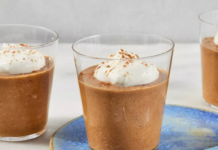The whole world knows chocolate and cocoa, but when it comes to dissecting the composition of the fruit of the cocoa tree, connoisseurs are much rarer. The pod actually contains other elements than the beans, which are increasingly reused instead of being considered waste. Elfi Maldonado, owner of the Qantu chocolate factory in Montreal, helps us see things clearly.
The pericarp (pod)
PHOTO ALAMY, PHOTOMONTAGE THE PRESS
The pericarp (pod)
Outer covering of the fruit, rigid once it is ripe. “When it is fresh, some will dry it into flour to use it in baking. It can also be converted into fertilizer,” says M.me Maldonado. Producers, such as Blue Strips, reduce it to powder to include it in their chocolate bars, in granola or in seed mixtures.
The funiculus (placenta)
PHOTO ALAMY, PHOTOMONTAGE THE PRESS
The funiculus (placenta)
A sort of “backbone” to which all the beans are attached. “Producers are doing tests and research to use it as a sweetener, or to enrich bread, as there is a lot of fiber. But it’s still on a small scale,” points out the owner of Qantu.
The pulp (mucilage)
PHOTO ALAMY, PHOTOMONTAGE THE PRESS
The pulp (mucilage)
Once the pod is opened, the pulp, which has a gelatinous texture, will only keep for two days. “It basically contains water and sugar,” says Elfi Maldonado. And this is why “cocoa water” drinks are appearing on the market (especially in Europe and Latin America). The Brazilians make tangy jellies and jams.
The bean
PHOTO ALAMY, PHOTOMONTAGE THE PRESS
The bean
It is broken down into two parts, an almond wrapped in a bark. Usually, we get rid of the husk to make the chocolate, but some chocolatiers now use it in their recipe (Blue Strips). This skin can also be recovered to make food for breeding, fertilizer or an infusion to flavor various drinks: herbal teas, beers, spirits.
Local reuse
In Quebec, previously neglected parts of the pod are included in certain products. The Avant-Garde brewery, for example, has just launched a beer, Cacaophonie, infused with pieces of bean and bark. “It’s an 8% imperial brown ale, matured in whiskey barrels for eight months. Once unloaded, it is infused with three varieties of cocoa. We kept some of the bark which brought olfactory notes and complexity,” explains Shawn Duriez, co-founder of Avant-Garde. The Côte des Saints distillery, in Mirabel, also uses them to infuse them into a barley-based liqueur. Finally, the restaurant Le Mousso created a miso, used in sauce, from fermented peels (without the almond), after visiting the Qantu laboratory and seeing that this part was set aside.













